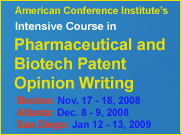The United States Patent and Trademark Office (Office) is adopting new rules governing the conduct of disciplinary investigations, issuing warnings when closing such investigations, disciplinary proceedings, non-disciplinary transfer to disability inactive status and reinstatement to practice before the Office. See Changes to Representation of Others Before the United States Patent and Trademark Office; Final Rule (14Aug2008).The Office is adopting a new rule regarding recognition to practice before the Office in trademark cases. The Office also is adopting a new rule to address a practitioner’s signature and certificate for correspondence filed in the Office.
Included in the rules for part 11 are rules governing the conduct of investigations, disciplinary proceedings, issuing warnings, disciplinary proceedings, reinstatement, recognition to practice before the Office in trademark cases, and a practitioner’s signature and certificate for correspondence filed in the Office.
The primary purposes for adopting procedures for disciplining practitioners who fail to conform to adopted standards and non-disciplinary procedures for transferring practitioners to disability inactive status include affording practitioners due process, protecting the public, preserving the integrity of the Office, and maintaining high professional standards. The final rules will be applied only prospectively, not retroactively.
Included in the rules is a clarification under Subsection 11.5(b) of practice before the Office as including a law-related service that comprehends any matter connected with the presentation to the Office or any of its officers or employees relating to a client’s rights, privileges, duties, or responsibilities under the laws or regulations administered by the Office for the grant of a patent or registration of a trademark, or for enrollment or disciplinary matters.
The section provides that nothing in § 11.5 prohibits a practitioner from employing or retaining non-practitioner assistants under the supervision of the practitioner to assist the practitioner in matters pending or contemplated to be presented before the Office.
Section 11.5(b)(1) provides a definition of practice before the Office in patent matters, which includes preparing and prosecuting any patent application, consulting with or giving advice to a client in contemplation of filing a patent application or other document with the Office, drafting the specification or claims of a patent application; drafting an amendment or reply to a communication from the Office that may require written argument to establish the patentability of a claimed invention; and drafting a communication for a public use, interference, reexamination proceeding, petition, appeal to the Board of Patent Appeals and Interferences, or other proceeding. This section also provides that registration to practice before the Office in patent cases sanctions the performance of those services which are reasonably necessary and incident to the preparation and prosecution of patent applications or other proceeding before the Office involving a patent application or patent in which the practitioner is authorized to participate. The services are identified as including consideration of the advisability of relying upon alternative forms of protection which may be available under state law, and drafting an assignment or causing an assignment to be executed in contemplation of filing or prosecution of a patent application if the practitioner is filing or prosecuting the patent application, and assignment does no more than replicate the terms of a previously existing oral or written obligation of assignment from one person or party to another person or party.
Section 11.5(b)(2) provides a definition of practice before the Office in trademark matters which includes consulting with or giving advice to a client in contemplation of filing a trademark application or other document with the Office; preparing and prosecuting an application for trademark registration; preparing an amendment or response which may require written argument to establish the registrability of the mark; and conducting an opposition, cancellation, or concurrent use proceeding; or conducting an appeal to the Trademark Trial and Appeal Board.
With regard to § 11.5, the final rule will be applied only prospectively to assignments and licenses written on or after the effective date of the final rules.
The Office of Enrollment and Discipline can be found here.
See also the Invent Blog.

 Billed as the ONE AND ONLY course where you will learn how to add value to your practice by drilling into the complex nuances of pharmaceutical and biotech patent opinion writing to reveal the strategies, solutions, and tactics for successfully tackling the issues,
Billed as the ONE AND ONLY course where you will learn how to add value to your practice by drilling into the complex nuances of pharmaceutical and biotech patent opinion writing to reveal the strategies, solutions, and tactics for successfully tackling the issues, 